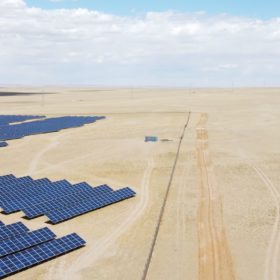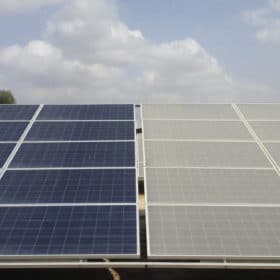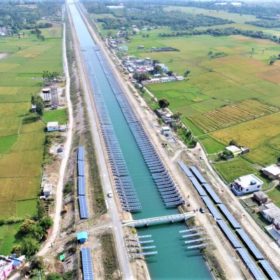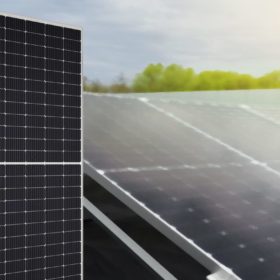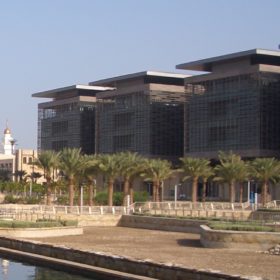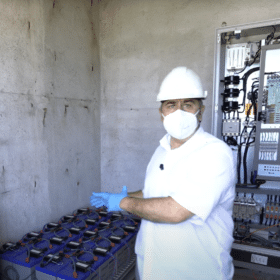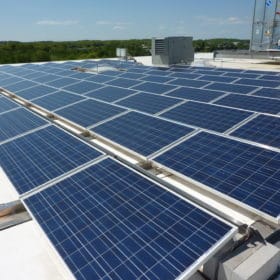Mongolia has first smart grid management system installed–from the UK
Covid-19 border closures meant the first ‘active network management’ system was planned and commissioned for the Asian nation by the U.K. division of Saudi-owned smart grid specialist ZIV Automation.
AI identifies a $14bn solar problem
How do you know when an inverter or module is under-performing? Monitoring services should shed light on problems but AI-driven digital asset manager Raycatch says much information is hidden behind a wall of “noise.” Breaking that wall with advanced data analysis could unlock billions of cost savings.
UK start-up builds gravity-based storage system at Scottish port
Scottish start-up Gravitricity has begun construction of a 250 kW gravity-based energy storage project at Port of Leith. A 15m-high rig uses renewable energy to raise a mass in a 150-1,500m shaft and discharges the electricity thus ‘stored’ by releasing the mass to rotate an electric generator.
Solar arrays on canals
PV installations on canals are common in India, as they provide electricity without occupying land, while reducing evaporation. However, they are still more expensive than ground-mounted PV projects.
III-V multi-junction solar cell with 39% efficiency
Finnish scientists have developed a four-junction solar cell based on III-V semiconductor materials that is said to be able to achieve a wide spectral coverage. The cell was monolithically grown on gallium arsenide by molecular beam epitaxy (MBE).
Sharp develops 445 W half-cut panels for large scale PV
The new panel is manufactured with M6 wafers. It features a power conversion efficiency of 20.1% and a temperature coefficient of -0.347% per degree Celsius.
Solar could play big role in helping renewables displace UK’s planned gas fleet
Each 1.8 GW of new gas generation capacity could be replaced by 1.7 GW of solar as part of a cleaner, 6.3 GW collection of renewables and energy storage facilities–and that alternative already comes in cheaper than the business-as-usual approach, according to the Carbon Tracker thinktank.
Focus on temperature to reduce LCOE, says new study
A new model to assess the role of module temperature in PV power plant economics, developed by scientists in Saudi Arabia, finds that keeping modules cool could be an even more effective strategy to increasing energy yield than pursuing further gains in cell efficiency. The model finds that reducing module temperature by three degrees has a similar impact on energy yield to a 1% increase in conversion efficiency.
New power electronic device to manage surplus solar power–Part II
The first pilot tests have been conducted for the EU-funded project ‘renewable penetration levered by efficient low-voltage distribution grids (RESOLvD). pv magazine has looked into the demonstrator and the related energy sharing algorithm.
Hybrid operational strategy to use lithium-ion storage in commercial PV arrays
Lithium-ion batteries can not only improve self-consumption in commercial PV systems but are also able to efficiently perform peak shaving and price arbitrage, according to an international research group which has proposed a new strategy to calculate the best system configuration in terms of costs and revenue. The scientists specified, however, that the novel strategy may become effective only if storage system prices will drop under $250/kWh.
